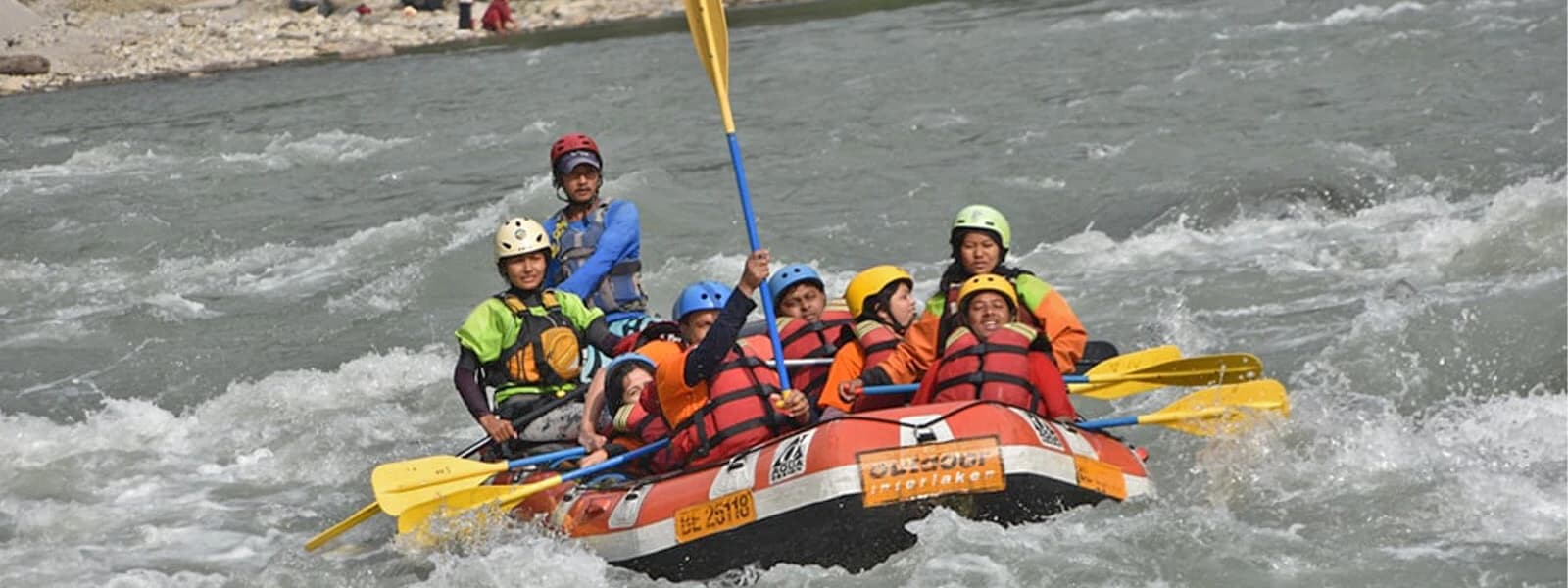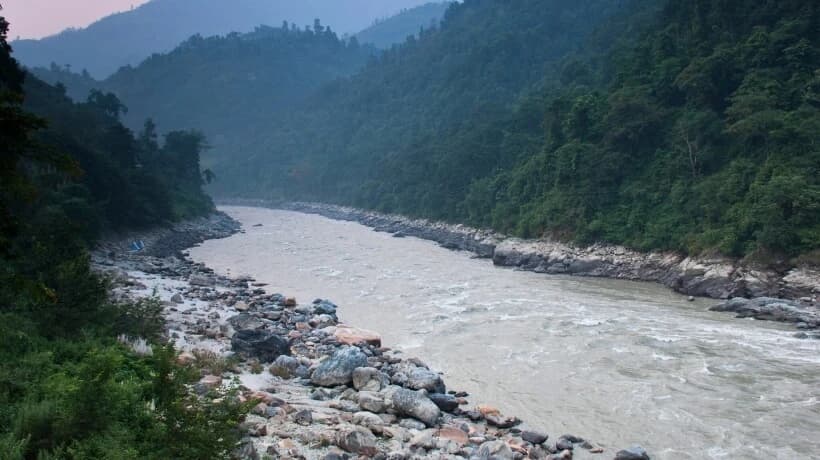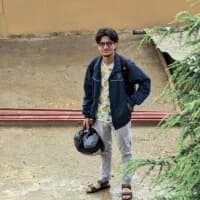Trishuli River Rafting unfolds unlimited fun through the whitewater highway. It is the busiest river in Nepal where thousands of international and domestic tourists flock to experience the excitement of living in an inflated rubber boat.
Paddling in Trishuli River is not just experiencing rafting but rejuvenating in the thrill where adventurers challenge the wilds. This around 28 kilometers water highway takes you to the extremes of life. At one moment you are calm and in the next, you feel as if your heart is almost stuck in your neck. Yes, definitely rafting in the Trishuli River is an adrenaline rush!!
Highlights
- Enjoy the scenic drive along the Trishuli river
- Explore the great scenery & natural beauty of Nepal
- Experience the white water rafting adventure
- Impressive gorges, and exciting rapids
Trishuli River Location
It is a fun-packed exhilarating white water trip where unexpected thrills are expected in every rapid and bounce. The reason for the popularity of Trishuli River Rafting is its accessibility. The road connectivity to the starting point of Trishuli River Rafting is very common especially; from Kathmandu. It is also easily accessible from Pokhara (approx. 4 hrs drives) & 1 hr. drive from Chitwan National Park.
It takes around three hours to arrive at the starting point—Charaudi—of Trishuli River Rafting|Kayaking from Kathmandu. You will paddle for more than three hours in the river. It will be a hilarious experience in your life. Expert raft guides will give you some basic tips before you jump in the boat. Safety is the main matter of concern so you need to follow all the safety measures in a disciplined manner.
Trishuli River Famous For
The impressive gorges, exciting rapids, some easier sections, and easy accessibility from Kathmandu and Pokhara make the Trishuli river Nepal's most popular rafting river. Made up of the snow melt of Mt. Ganesh and Langtang Himal, the Trishuli river rafting is one of the most popular outdoor activities in Nepal.
Trishuli River Side Resort
The accommodation facilities at the stoppage point of rafting are of international standard. Many resorts are there which give perfect service to its guest, from pick up point to drop off. Among them, we use Trishuli River Side Resort to accommodate our guests who prefer an overnight stay during the Trishuli river rafting trip.
Trishuli River Rapids & Depth
The river is graded as 3+ during autumn and 4+ during spring. Regulus suggests its guest not to have rafting here during monsoon as the rapids go above 5+ at that time. The rapids here have different names and among them ‘welcome’ is the first one that welcomes you with a powerful splash on your face. The first stage of rafting is not that difficult. While in this phase you get the opportunity to swim in the Trishuli River.
Lady Delight is another rapid which makes you scream for around 100 meters of a rough ride. After lunch, the real thrill begins.
Twins Rock is the rapid where you will enjoy outrageous waves of water. It flows in between two giant rocks. Similarly, there are many other rapids that you encounter one after another and each rapid has its own unique feature. Some of the rapids are Offset l, Offset ll, Snail's nose, Teendevi, Malekhu rapid, Monkey rapid, Surprise, Monsoon, Cotton Pony, S-Bend, Highway, Monsoon, and Pinball Rapid.
Rafting in Trishuli River Price
One Day Rafting Trip Cost
| Nationality | Nepales | Indian | Foreigns |
| Price | Rs. 1600 | INR 2500 | USD $ 45 |
| Remarks | With Lunch | With Lunch | With Lunch |
Overnight Trishuli River Rafting Cost
| Nationality | Nepales | Indian | Foreigns |
| Price | Rs. 2500 | INR 3500 | USD $ 90 |
| Remarks | Meals + Room | Meals + Room | Meals + Room |
Along with Trishuli rafting, you can join other thrilling activities in Nepal like Paragliding, Mountain Flights, Helicopter Sightseeing Tour, Zip Flyer, Sky Cycling, etc.







